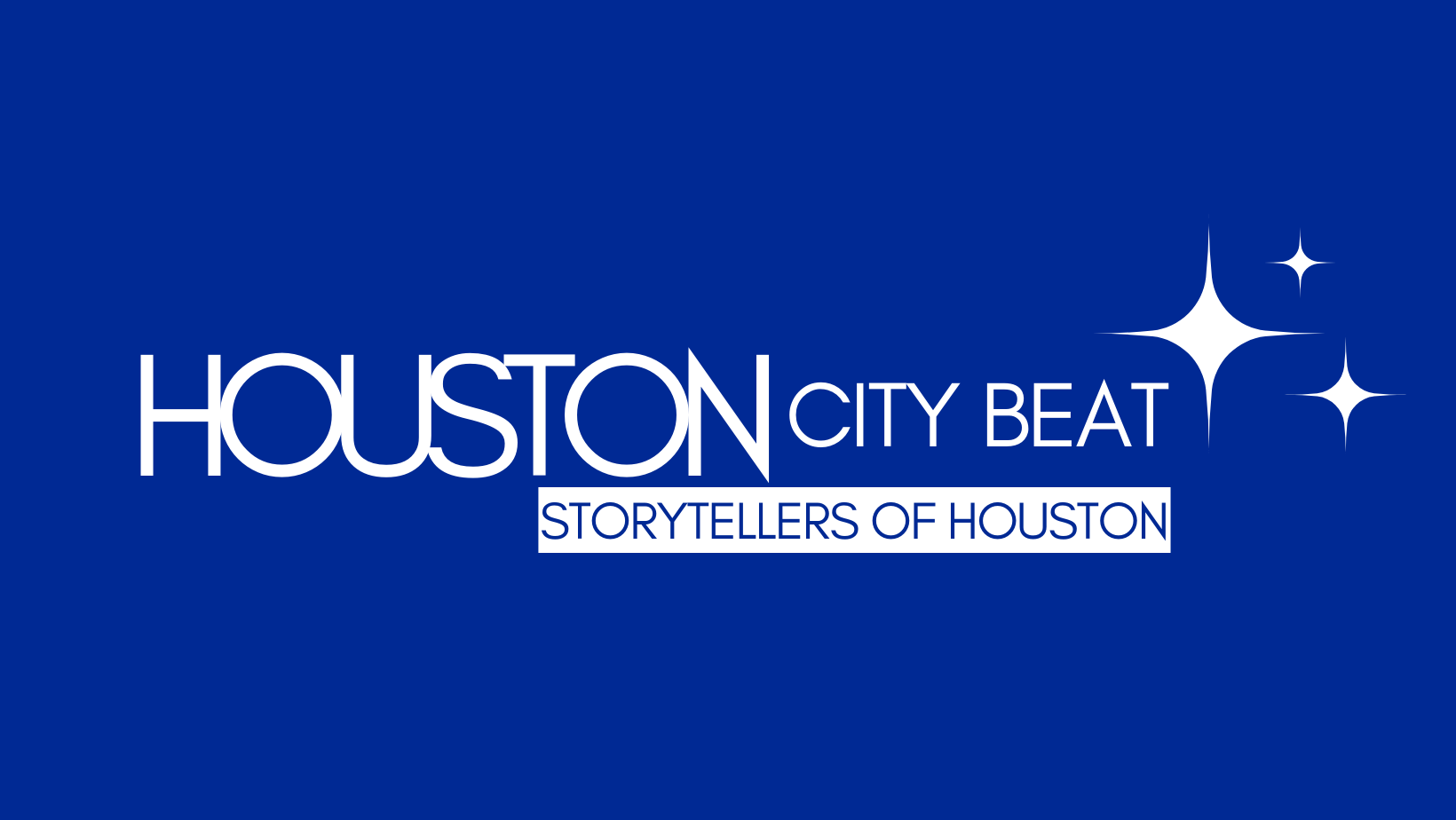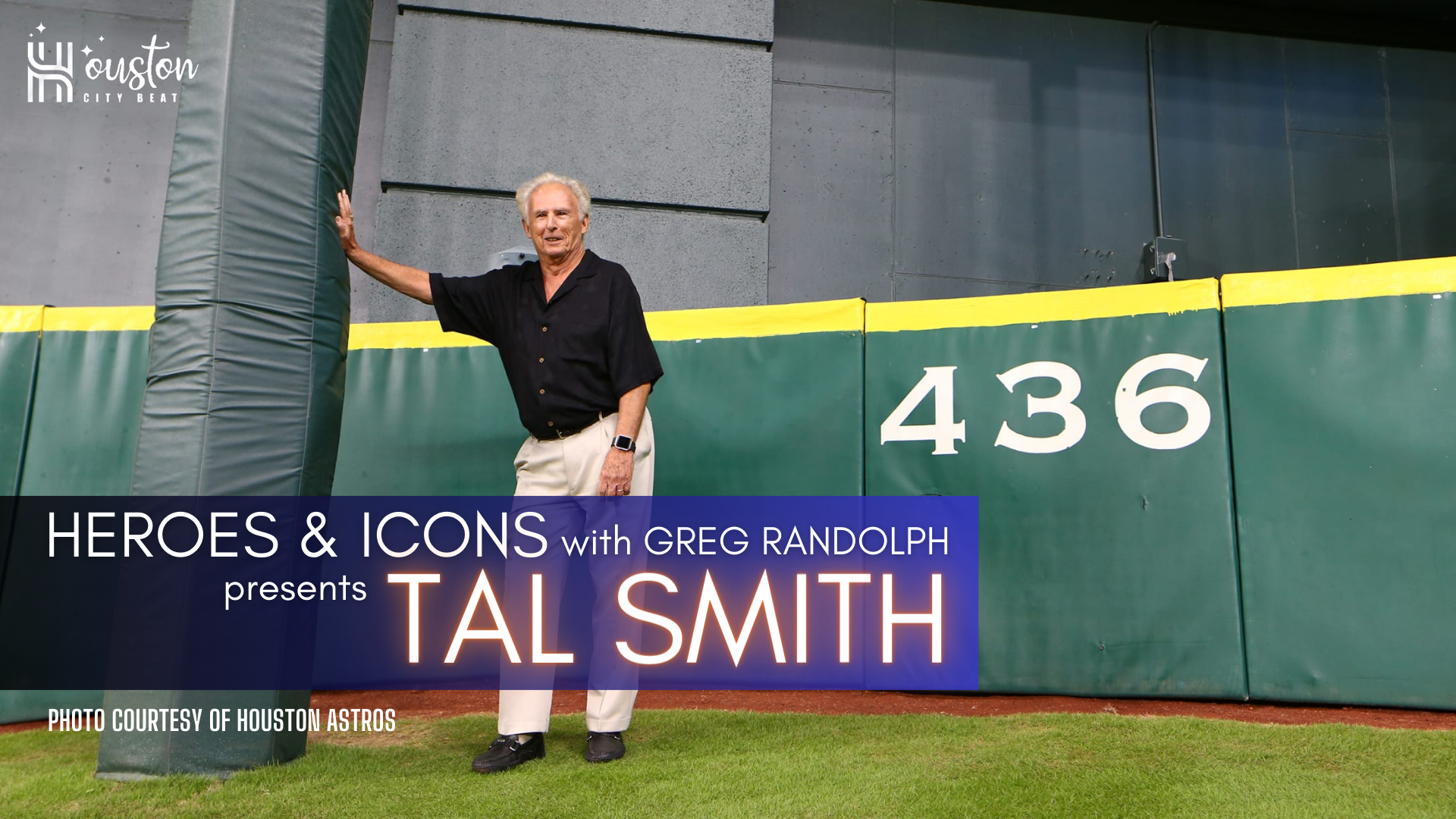
Heroes and Icons with Greg Randolph and special guest Tal Smith.
Tal Smith is a longtime baseball executive who was instrumental in the formation of the Colt .45s and Houston Astros. He also was a key figure in the completion of the Astrodome. In Part 2 of a 2-part series, we discuss how he rebuilt the Astros into a playoff contender; what goes into making a trade; and an inside look at the arbitration process, among other behind the scenes looks from his illustrious baseball career.
Click on the button to listen to Greg Randolph and Tal Smith's interview.
Welcome and thank you for joining us today on the Heroes and Icons podcast. I'm your host, Greg Randolph. Please find me on Instagram at Heroes and Icons Podcast and on Twitter at Heroes icons Pod. Please rate, share and review the show. And thank you for doing so.
Once more, we have a special guest with us today. I'm honored again to have longtime and revered baseball executive Houston Astros Hall of Famer, Class of 2022 Tal Smith on the Heroes and Icons podcast today. Our show is brought to you by my friends at Houston City Beat, and there's just something about that beat. They can be found on Facebook at Houston City Beat or on the web at houstoncitybeat.com.
GR: How are you, Tal? I hope traffic was a lot better for you today coming in?
TS: I'm fine, Greg. Nice to visit with you again.
GR: Yes, sir. Yes, sir. Well, thank you very much for being on the show with me a second time. And this is part two of a two-part episode with Mr. Smith. So here we go. Well, let me start, let me -please allow me to jump back to the New York Yankees days from 1973 to 1974. And so, so my question here is, were you able to see any of the construction on original Yankee Stadium in those two years when you were there?
TS: Not really, Greg, By the time I joined the Yankees, and as I recall, that was probably November of 1973, and by that time the renovation was well underway.
I did know the architect, that the Yankees had employed that was working on it, and I talked to him from time to time, on occasion. He'd shown me something on the plans of it and so on. But from an actual construction or renovation standpoint, that was well underway and really didn't have too many occasions to get to Yankee Stadium. As a matter of fact, the only one I really remember is after we had made the decision to return to Houston, I packed up the family in our station wagon. And, we made one last trip up to Yankee Stadium to sort of say goodbye, you know, because if we had stayed, that would've been our future home.
We never got to enjoy that. I love the Yankee legacy and, and it was an honor to work for them, but I never really got to work in Yankee Stadium.
GR: Sure. Okay. I knew that you most certainly must have officed out of Shea during those years,
TS: During the renovation of Yankee Stadium, as the Yankees had made arrangements, to play in Shea Stadium, to share that with the Mets. But we actually officed in the, what was called the Parks Administration Building, which was a short walk from Shea Stadium. And that was the offices that had been used during the World's Fair in New York, which I believe was in the mid-1960s, 1964, 65, something close to that. And that had been sort of the headquarters building for them. And it was just a short walk from there to the ballpark. And we would actually park our cars at the Parks Administration Building, go to the game and then come back to the office and, and so on. So, from an office standpoint, we spent time in Shea, but just for the ball games.
GR: Gotcha. Okay. I figured it must have been something along those lines. It wouldn't necessarily make a whole lot of sense to maybe office out of a large construction site like that, unless it was just unavoidable.
TS: Sure.
GR: So, let me ask you about those teams that you were a part of in 73 and 74 with the Yankees and about some of those players. What was your thought on the roster construction at that time with free agency on the horizon there?
TS: Well, George- George Steinbrenner, had bought the Yankees at the start of the 1973 season, and the Yankees were, from a playing standpoint, really in a state of distress. They were not very good, with the exception of Bobby Murcer, and Thurman Munson was coming along, but they didn't have a lot of marquee players and they weren't very good. And, so, since Steinbrenner brought in Gabe Paul, and they made a lot of changes during the 1973 season, I joined them at the end of that, as I said, I think it was November of 1973.
GR: Right.

TS: But by that time they had already made some changes. They had acquired Graig Nettles by that time, shortly after I joined them at the end of the 73 season. As a matter of fact, I can recall this distinctly. They made a deal with Kansas City to acquire Lou Piniella.
GR: Right.
TS: And that was a very key move. They got Piniella in exchange for Lindy McDaniel. And, I was coming home for the Christmas holidays to spend that time with my family. We were still located here in Houston. And I actually had to meet Lindy, someplace along I 45, and I forget where he was going, but I had to get him to sign the disposition paper. So I actually got a chance to say goodbye to him. But those were key moves that had been made. And then early in 1974, one of the more dramatic, moves was the big trade with Cleveland, where the Yankees sent five pitchers, as I recall, to Cleveland for Chris Chambliss and Dick Tidrow. And the trade was not well received initially, certainly by players and even fans. How can you send off five pitchers? We need pitching and so on. Well, it, it was a good move. Chambliss was a key part of the Yankee success in future years. Dick Tidrow played an important role and so on. So those, those were some of the big moves. Later on, I guess the most controversial move came at the end of the 1974 season. And I recall this because I was with Gabe when we went out to visit Horace Stoneham in San Francisco and discussed the possibility of acquiring Bobby Bonds at that time for Bobby Murcer.
GR: Right.
TS: You know, Murcer had followed in the footsteps of DiMaggio and Mantle and so on. I think it was unfair to Bobby. That had actually put too much pressure on him, just too hard to live up to those expectations and whatnot. But we thought Bobby Bonds was quite a talent. So that was another key move made at the end of the 1974 season. There was a lot of roster turnover.
GR: Right.
TS: I think it turned out to be pretty successful. The club came very close to winning in 1974. And in 1976, they did win.
GR: They did. And they had Catfish Hunter who came over in 1975. if I have that right. Were you with the Astros at the time? Did were, did you try to get him to Houston?
TS: No, I was with the Yankees. Catfish became a free agent at the end of 1974 season.
GR: Right.
TS: And I can recall we had the press conference, if I recall correctly, at our offices at the Park Administration Building, as I said, close to Shea Stadium, and I believe that was New Year's Eve of 1974. So, Catfish became a, became a key component of the 1975 and subsequent teams.
GR: Sure, sure. Very good. So, I wanted to kind of follow up on that and ask about the philosophy of, of roster construction again. At that time, 1975, you had come over to the Astros. So my question then, is it, would it have been a good move to have signed a large free agent like Catfish Hunter at the outset of a rebuild, or was it a better situation to not have a big free agent and not have maybe some of that pressure at the outset for expectations and then to build from that?

TS: Well, there really wasn't a choice because when I came back to the Astros in August of 1975, that was under the auspices of the two credit companies, GE Credit and Ford Motor Credit. And they had taken over direction of the club, one of the boards, so to speak, because of the indebtedness by the club to them.
They were not in this for the long haul. They just wanted to recoup their loans and whatnot and wanted to see the club be able to continue, but not by putting a lot of money into it. And we had what really was a zero-based budget, so to speak. Every dollar that we spent you had to justify and had to come from some other source. So from that standpoint, we didn't have the financial discretion to go after free agents. The 1975 Astros had finished 43 and a half games out of first place. It was 64 and 97, their record. And so obviously when you've got a club with that kind of a record, that probably signifies there's a lot of improvement that has to be made. And we weren't going to do it by making a splash and going out and signing one free agent. We didn't have the funds to do that, and I didn't think that was the right direction. Instead, I felt that what we had to do was to rebuild. I know that's not a popular term sometimes, but that's just facing reality. We had to get younger and we had to get less expensive. If we could save money and player payroll by trading off older, more expensive players and rebuilding with younger and less expensive players. That meant there was more money perhaps to be spent on scouting and player development and other aspects of the operation. So that's the course that we chose. And over the years, or a number of fine players that I knew very well from my earlier days with the Astros, who had played for the club and rendered very, very good service for several years that we had to dispose of, or we did dispose of. I mean like Doug Rader being one of them, Roger Metzger and so on. But we did this because we felt that was the course that we had to follow if we were going to be successful. And, you know, it sometimes takes a long time. I mean, we went from 43 and a half games out of first place in 1975 to contending for the pennant in 1979 and in 1980, winning the division. So from that standpoint, that was the philosophy or the course and, we had to go out and acquire in a lot of cases, players that were really not well known to the public or to the media. I think if players like Art Howe, and Denny Walling and so on, and Denny Walling was actually on the disabled list at Oakland when we acquired him. He had a fractured wrist at that time. And we had a veteran outfielder we had acquired from the Dodgers, that had just been with us a short time. And Charlie Finley had interest in him. Oh, it was Willie Crawford. And, Charlie Finley had interest in him, and Crawford wasn't somebody that really fit into our long-term scheme of things. So, he mentioned several names that didn't we have any interest in. And I guess we asked about Walling and he said, well, you know, off our scouting reports from Pryor Service. And he said, well, he's on the disabled list, and I said, that's all right. Well, after we found out more about the injury, we went ahead and did that. Art Howe was buried at 3rd base at Pittsburgh. He had not been able to crack into the starting lineup. We got Art. And as a matter of fact, I think when we first acquired him, we even sent him out to AAA for a little bit of time before we brought him back and made some other changes. I think that was when we traded Rader and that opened up third base for Art or Enos Cabell.
GR: Yep. Yep. So, in 1980 then Joe Morgan and Nolan Ryan were brought in at that time as the big splash free agents, and it was that time in the development of the team where that was the right time to bring those guys in.
TS: Right. And that was a different ownership by that time. The two credit companies had sold the club to John McMullen and his partners. So we were no longer under the same restraints that we had been from a budget standpoint. Ryan obviously was a key free agent, and we had a lot of interest in Nolan. And, well now we sort of sensed that he would like to return to Texas, his home being in, in Alvin. And I had actually tried to acquire Nolan on several occasions when he was with the Angels. And I thought at one time we, I think at the end of the 1978 season, I thought we just might've had a deal done with their GM Buzzy Bavasi.
I left the winter meetings and I was waiting on Buzzy to get back and confirm the deal. And one of his aids came to me and said he's not going to do it. He changed his mind. So anyway, Nolan stayed with the Angels and became a free agent in 1979. John McMullen, the owner of the club, wanted to pursue him, and wanted to make the splash from a marketing standpoint, and I wanted to do it from a player standpoint, obviously Nolan was one of the greatest pitchers of all time. And what he could add to our rotation and so on. On Joe Morgan, it was a somewhat different situation. Joe had had a great career at Cincinnati had become a free agent and he was still available fairly late in the free agent process. And I, I forget the exact chronology. I want to say this was after the Christmas holidays. We were into the first part of the year and spring training’s approaching and so on. Joe was represented by Tom Rich. Tom was an agent that I had known for a number of years. We had a great relationship. He represented a number of our players, including JR and Enos Cabell and others. Tom and I would talk frequently even if there wasn't a particular negotiation, just sort of exchanging industry information and in one of our conversations, the possibility of Joe Morgan returning here, because he hadn't gone on to another place, he was still out on the market. And if, if there was going to be something that he was particularly interested in or somebody that wanted to really make him a big deal, that likely would've already transpired, right? It hadn't. So yeah, I thought there were some things that we would have to discuss to make sure Joe was comfortable coming back here in whatever his role might be, because he was not of the same caliber, the same stature player that he had been, say five or six years earlier. So, we arranged a meeting. Tom and Joe Morgan came down. I had Bill Virdon, our manager, fly down from Springfield, Missouri so the four of us could meet and discuss all the parameters- not necessarily the financial aspects, but Joe, how are you going to react if you're not in the starting lineup? How are you going to react if you’re pinch hit for or pinch run? I'm not saying these things are going to happen. Because I think that was an important aspect. We had a fairly well-set club by this time. Cabell was at third, Craig Reynolds at short, Art Howe was playing first. Raphael Landestoy, who we had acquired from Los Angeles, had done a good job. And so, there was some question as to how Joe might fit in and what his role might be. And we didn't want to sign somebody and have a dissatisfied player, particularly somebody that was of Hall of Fame caliber, right? It's important for the clubhouse chemistry and atmosphere that you not have disruptions. Not that Joe would create them, but you didn't want somebody else to be creating them.
GR: Right.
TS: I mean like Doug Rader being one of them, Roger Metzger and so on. But we did this because we felt that was the course that we had to follow if we were going to be successful. And, you know, it sometimes takes a long time. I mean, we went from 43 and a half games out of first place in 1975 to contending for the pennant in 1979 and in 1980, winning the division. So from that standpoint, that was the philosophy or the course and, we had to go out and acquire in a lot of cases, players that were really not well known to the public or to the media. I think if players like Art Howe, and Denny Walling and so on, and Denny Walling was actually on the disabled list at Oakland when we acquired him. He had a fractured wrist at that time. And we had a veteran outfielder we had acquired from the Dodgers, that had just been with us a short time. And Charlie Finley had interest in him. Oh, it was Willie Crawford. And, Charlie Finley had interest in him, and Crawford wasn't somebody that really fit into our long-term scheme of things. So, he mentioned several names that didn't we have any interest in. And I guess we asked about Walling and he said, well, you know, off our scouting reports from Pryor Service. And he said, well, he's on the disabled list, and I said, that's all right. Well, after we found out more about the injury, we went ahead and did that. Art. Art Howe was buried at 3rd base at Pittsburgh. He had not been able to crack into the starting lineup. We got Art. And as a matter of fact, I think when we first acquired him, we even sent him out to AAA for a little bit of time before we brought him back and made some other changes. I think that was when we traded Rader and that opened up third base for Art or Enos Cabell.
GR: Yep. Yep. So, in 1980 then Joe Morgan and Nolan Ryan were brought in at that time as the big splash free agents, and it was that time in the development of the team where that was the right time to bring those guys in.
TS: Right. And that was a different ownership by that time. The two credit companies had sold the club to John McMullen and his partners. So we were no longer under the same restraints that we had been from a budget standpoint. Ryan obviously was a key free agent, and we had a lot of interest in Nolan. And, well now we sort of sensed that he would like to return to Texas, his home being in, in Alvin. And I had actually tried to acquire Nolan on several occasions when he was with the Angels. And I thought at one time we, I think at the end of the 1978 season, I thought we just might've had a deal done with their GM Buzzy Bavasi.
I left the winter meetings and I was waiting on Buzzy to get back and confirm the deal. And one of his aids came to me and said he's not going to do it. He changed his mind. So anyway, Nolan stayed with the Angels and became a free agent in 1979. John McMullen, the owner of the club, wanted to pursue him, and wanted to make the splash from a marketing standpoint, and I wanted to do it from a player standpoint, obviously Nolan was one of the greatest pitchers of all time. And what he could add to our rotation and so on. On Joe Morgan, it was a somewhat different situation. Joe had had a great career at Cincinnati had become a free agent and he was still available fairly late in the free agent process. And I, I forget the exact chronology. I want to say this was after the Christmas holidays. We were into the first part of the year and spring training’s approaching and so on. Joe was represented by Tom Rich. Tom was an agent that I had known for a number of years. We had a great relationship. He represented a number of our players, including JR and Enos Cabell and others. Tom and I would talk frequently even if there wasn't a particular negotiation, just sort of exchanging industry information and in one of our conversations, the possibility of Joe Morgan returning here, because he hadn't gone on to another place, he was still out on the market. And if, if there was going to be something that he was particularly interested in or somebody that wanted to really make him a big deal, that likely would've already transpired, right? It hadn't. So yeah, I thought there were some things that we would have to discuss to make sure Joe was comfortable coming back here in whatever his role might be, because he was not of the same caliber, the same stature player that he had been, say five or six years earlier. So, we arranged a meeting. Tom and Joe Morgan came down. I had Bill Virdon, our manager, fly down from Springfield, Missouri so the four of us could meet and discuss all the parameters- not necessarily the financial aspects, but Joe, how are you going to react if you're not in the starting lineup? How are you going to react if you’re pinch hit for or pinch run? I'm not saying these things are going to happen. Because I think that was an important aspect. We had a fairly well-set club by this time. Cabell was at third, Craig Reynolds at short, Art Howe was playing first. Raphael Landestoy, who we had acquired from Los Angeles, had done a good job. And so, there was some question as to how Joe might fit in and what his role might be. And we didn't want to sign somebody and have a dissatisfied player, particularly somebody that was of Hall of Fame caliber, right? It's important for the clubhouse chemistry and atmosphere that you not have disruptions. Not that Joe would create them, but you didn't want somebody else to be creating them.
GR: Right.
[A portion of the transcript was removed. The remaining transcript is found below. You can hear the entire interview by clicking the podcast button above]
TS: Oh, a lot of memories there. I've worked with Bob Watson and Gerry Hunsicker and Tim Purpura and Ed Wade as GMs after I came back to the Astros in 1994. Enjoyed working with each of them. Still hear from Ed Wade regularly. Ed had started here as a young PR guy in the 1970s and he's gone on to have a very successful career. I actually hired Gerry I think on three different occasions. I hired him once for his entry into baseball, in a role in the seventies where he served a number of different things, you know, primarily as a key assistant to me and a number of different things. And then after I left it in 80, Gerry left too. And I hired him for my consulting practice. Then he got an opportunity to go on to the New York Mets and I brought him back again or helped recommend him to Drayton as a general manager after Bob Watson left, so I've had three different reigns and three different associations with Gerry. Ed the same way. I mean, he was a PR director here, and then he left and went to Pittsburgh. Then I hired him for Tal Smith Enterprises, and then he went on to the Phillies and then he came back here. You know, sort of like Gerry did. So, I enjoyed those relationships. Really enjoyed working with Larry Dierker. I've got great respect for Larry. He's an interesting guy. He's a fun guy and a very, very intelligent, articulate, keen mind. He’s a joy to be around.
GR: He is. And you know, I was going to mention before that, with all of the retired numbers and the great people who have worked in the Astros organization, players and otherwise, it's very difficult to say, almost impossible really to me, to say Houston Astros without saying Larry Dierker in that first minute.
TS: Absolutely correct. And I'd be remiss if I didn't say my most endearing relationship with anybody I worked with the Astros had to be Bill Virdon. Bill and I became very close friends and stayed in touch long after he left the Astros. He was a very special person. We had a great working relationship between a manager and a general manager. Just ideal. And we had a very close personal bond. I have to mention Pat Gillick. Pat and I became close friends and, and still stay in touch, so there've been a number of very, very meaningful associations.
GR: Absolutely. I was going to ask you about the time Ed Wade was house sitting for you, and he had to fish your dog out of the swimming pool. Is that right?
TS: My wife and I had gone, and I think this, was over the Christmas holidays and I think we were in Hawaii. I'm not mistaken Ed in those days, when he was a PR director, also had to run the other events that were at the Astrodome. And after baseball season, there was always something going on. Ed at that point was not married yet. And he was staying in Houston over the holidays because he had all these events, football games and tractor pulls and what have you, that he had to handle from a scoreboard standpoint. And we asked or he volunteered or combination thereof, to housesit for us and, and take care of our dog. And we had a pool in the backyard and the dog had aged some by this time and slipped and fell into the pool and he had to go rescue her .
GR: Oh, wow. Well, that's a good thing he was there. So let me ask you this. How would you want baseball fans to remember you and your career and what do you feel like your legacy is for baseball?
TS: Oh, that, that’s for somebody else to answer, Greg. I don't know that I can give that a real answer. I've had a great deal of fun, a great deal of enjoyment, a lot of satisfaction from my years in baseball with Cincinnati to start with, and the two years with the Yankees were meaningful and my 35 years with the Astros and whatnot. I think in our conversation here, we've touched on a number of the things that were meaningful to me as we went on. As to what other people think of that, that's for them to judge .
GR: Very good. Well, that will do it for this edition of The Heroes and Icons podcast. And thank you to our sponsor, my friends over at Houston City Beat. There's just something about that beat. And again, please find them on Facebook at
Houston City Beat and on the web at houstoncitybeat.com. Many, many thank yous to my special guest today, Tal Smith. It's always a pleasure to spend time with you and talk baseball.
TS: I thoroughly enjoyed it, Greg. Thanks ever so much.
GR: Thank you. I hold you in the highest personal regard and I'm very honored by our time together. So, thank you. Where was I? Sorry about that. Thank you Tal. And thank you again everyone once again for listening. Please remember to rate, share, and review the Heroes and Icons podcast with Greg Randolph, wherever you might be listening. Have a great night. God bless. We will see you next time. Thank you.
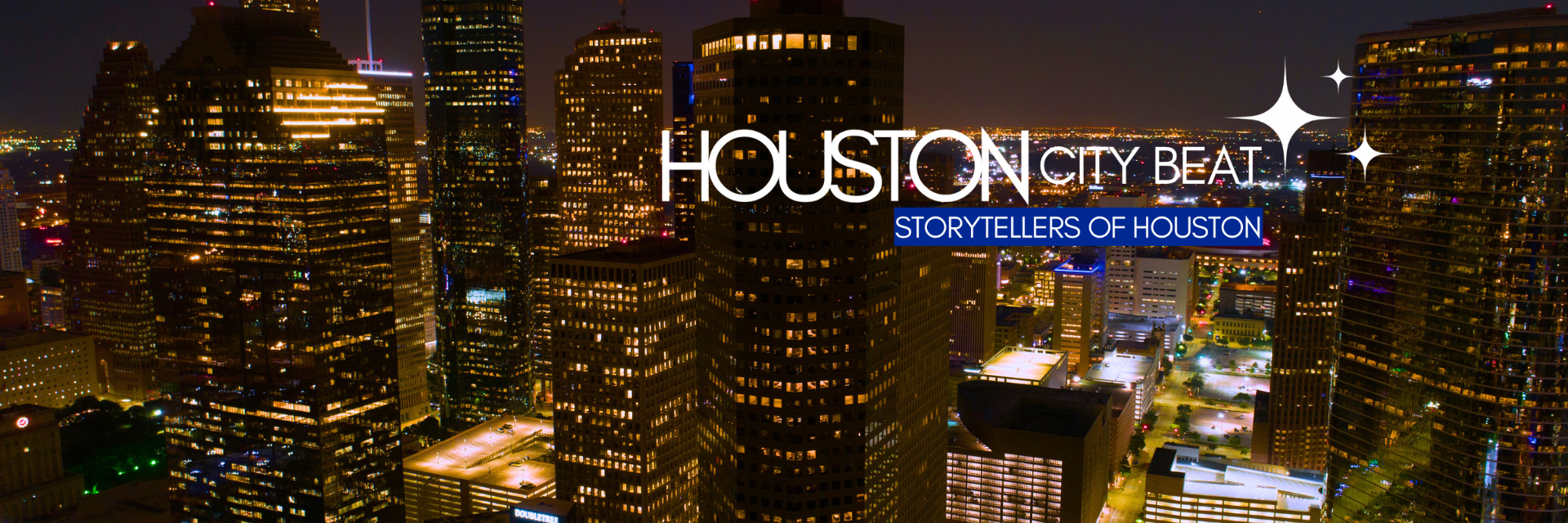 Button
Button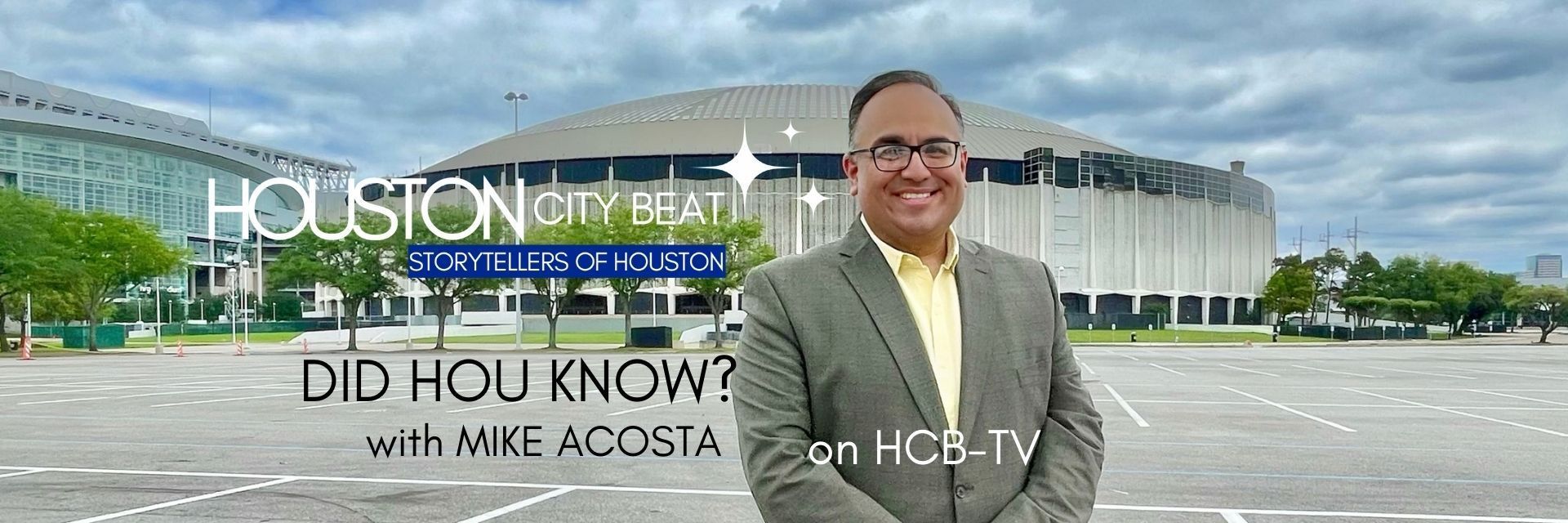
Slide title
Write your caption hereButton
Slide title
Write your caption hereButton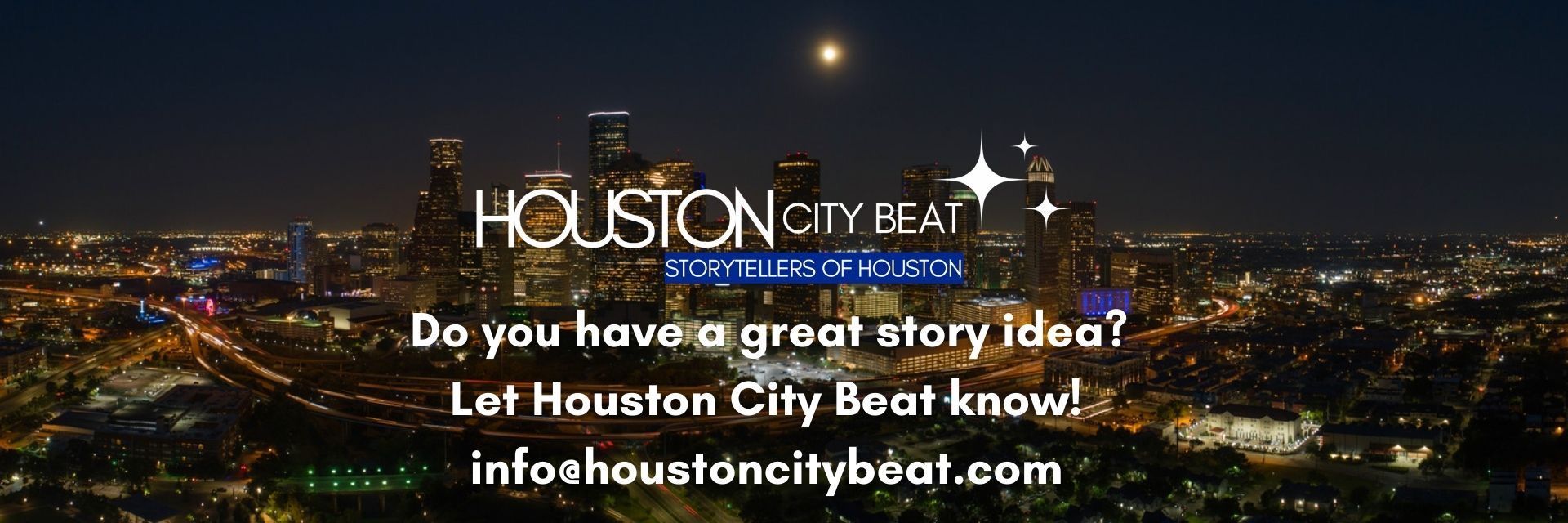
Slide title
Write your caption hereButton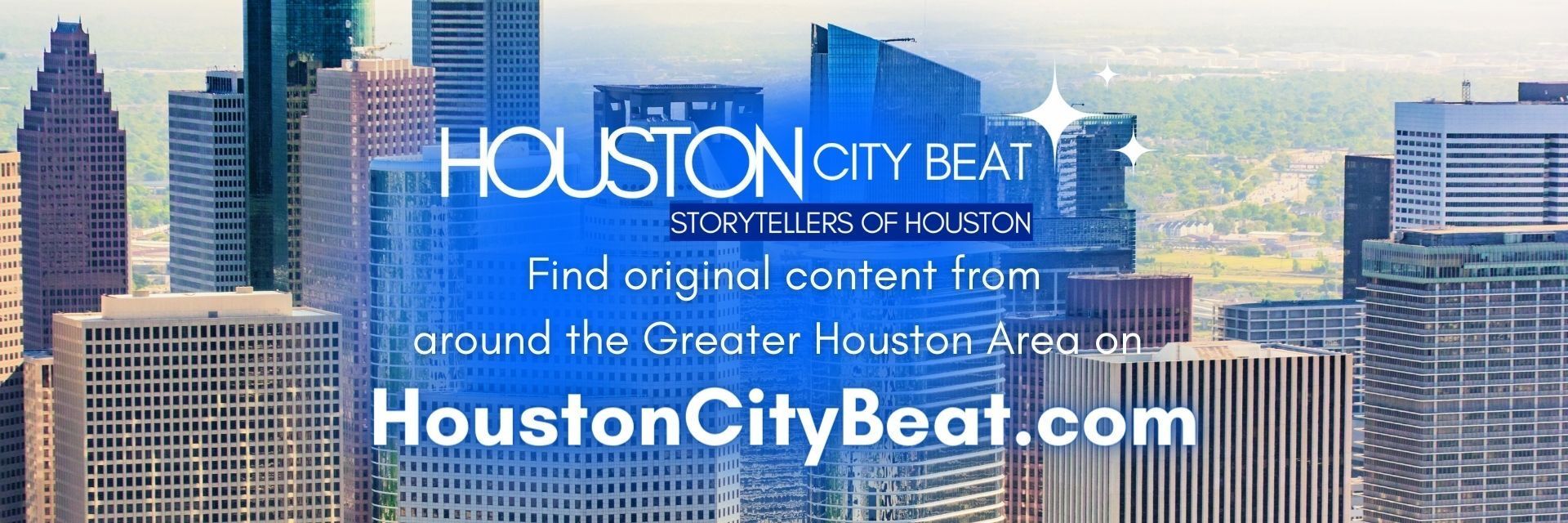
Slide title
Write your caption hereButton
Slide title
Write your caption hereButton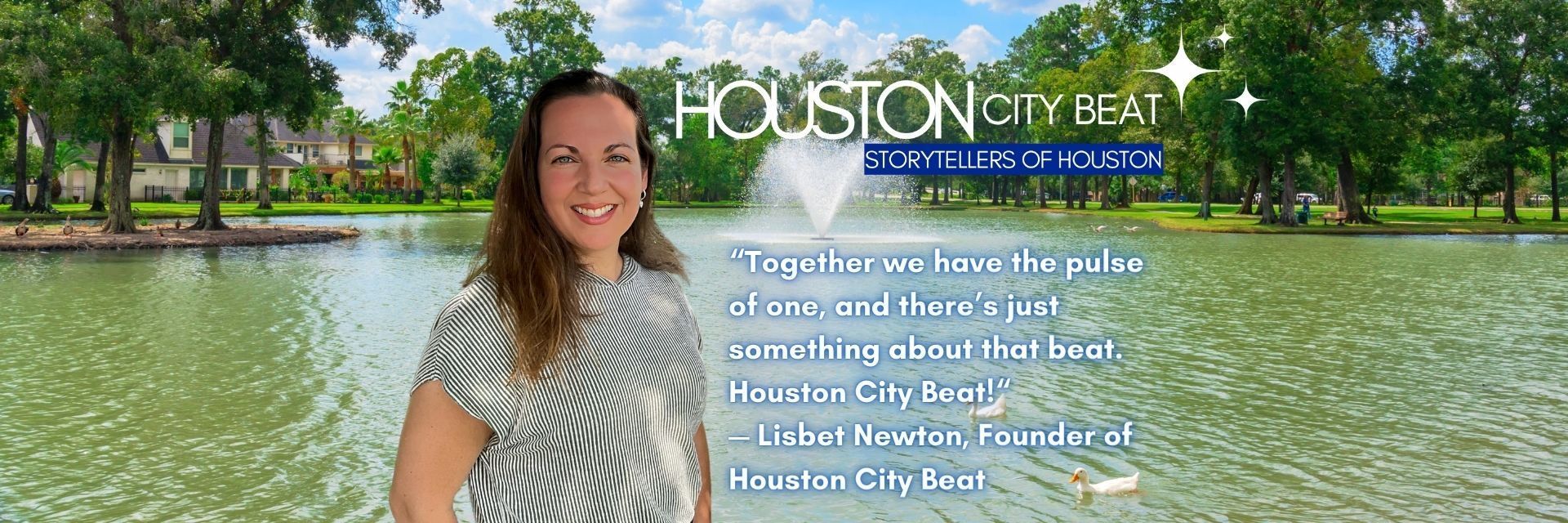
Slide title
Write your caption hereButton
Slide title
Write your caption hereButton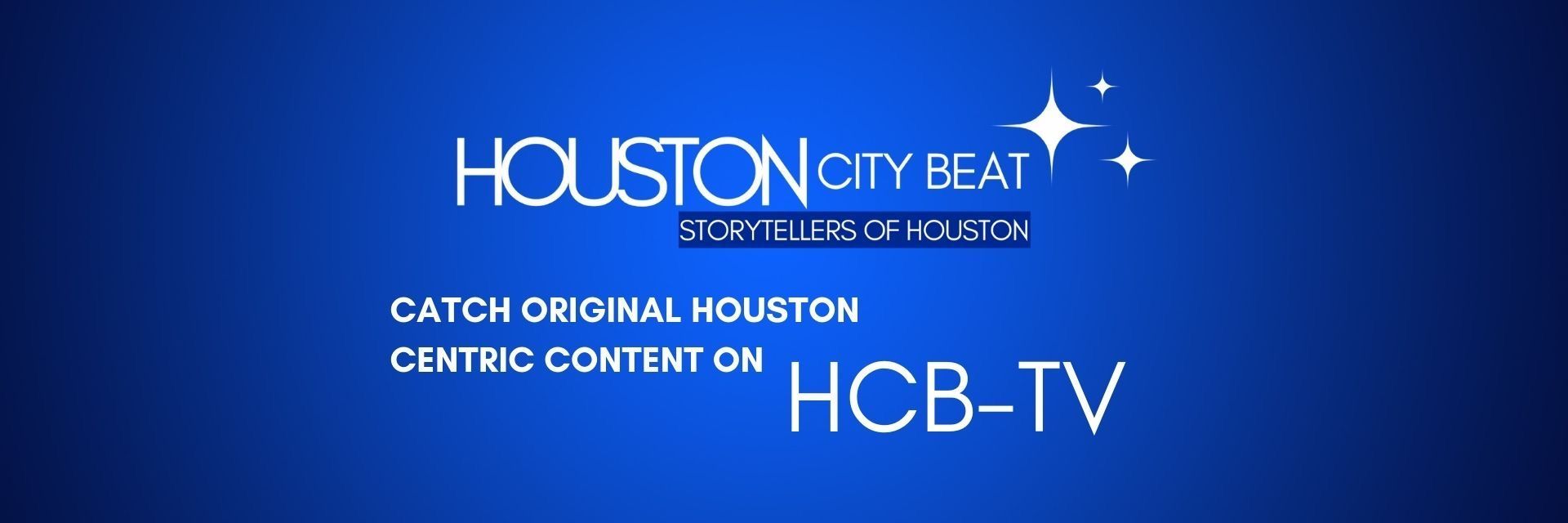
Slide title
Write your caption hereButton
All Rights Reserved | Houston City Beat
Website designed by: LisMarketing.co Produced by Acosta Media Group
